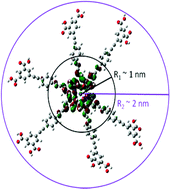Light-harvesting and electronic contacting capabilities of Ru(ii) Ipa rod and star complexes–first principles predictions†
Abstract
Homoleptic ([Ru(L)3]2+) and heteroleptic (Ru(NCS)2(bpy)(L)) complexes carrying rigid anchor-cum-spacer

* Corresponding authors
a
Theoretical Chemistry Division, Chemistry Department, Lund University, Box 124, S-22100 Lund, Sweden
E-mail:
Petter.Persson@teokem.lu.se
b Department of Chemistry, Rutgers University, 73 Warren Street, Newark, New Jersey, USA
Homoleptic ([Ru(L)3]2+) and heteroleptic (Ru(NCS)2(bpy)(L)) complexes carrying rigid anchor-cum-spacer

 Please wait while we load your content...
Something went wrong. Try again?
Please wait while we load your content...
Something went wrong. Try again?
P. Persson, M. Knitter and E. Galoppini, RSC Adv., 2012, 2, 7868 DOI: 10.1039/C2RA21240D
To request permission to reproduce material from this article, please go to the Copyright Clearance Center request page.
If you are an author contributing to an RSC publication, you do not need to request permission provided correct acknowledgement is given.
If you are the author of this article, you do not need to request permission to reproduce figures and diagrams provided correct acknowledgement is given. If you want to reproduce the whole article in a third-party publication (excluding your thesis/dissertation for which permission is not required) please go to the Copyright Clearance Center request page.
Read more about how to correctly acknowledge RSC content.
 Fetching data from CrossRef.
Fetching data from CrossRef.
This may take some time to load.
Loading related content
